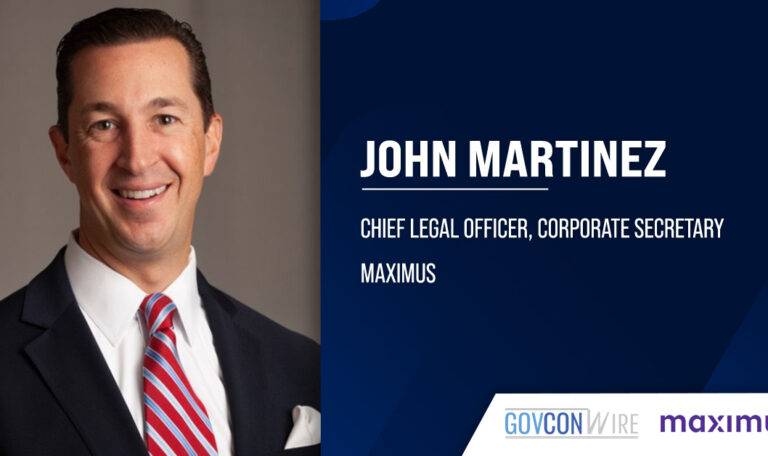During Potomac Officers Club’s Ensuring PNT Superiority on the Future Battlefield Virtual Event, an expert panel, comprised of notable leaders across the defense sector, took the stage to discuss how military PNT capabilities have become vital to the nation’s ability to shape the global environment, deter aggression, and fight and win wars, now and in the future.
The panel featured Col. Jason Joose, Chief of Staff and APNT Signature Effort Lead with Army Futures Command, William Bollwerk, former Department of Defense (DoD) leader, Hironori Sasaki of Orolia Defense & Security and John Betz, a Mitre Fellow Emeritus, which was moderated by Kevin Coggins of Booz Allen Hamilton.
The panel addressed how the Department of Defense (DoD) and the private sector can work together to create resiliency within the military’s existing GPS enterprise, create sources of PNT that enable robustness and resilience, and find ways to disrupt adversaries’ use of PNT information.
If you missed the live version of Ensuring PNT Superiority on the Future Battlefield, you can still access the OnDemand Event by visiting Potomac Officers Club’s Event Archive.
Koggins introduced the panel, noting the panelists’ accomplishments and contributions to the defense sector. Koggins then posed the first question to the panel, stating: “We’ve integrated GPS into every major capability we use in the DoD. What lessons have we learned over the course of exclusively focusing on GPS, as we move toward the PNT paradigm?”
Betz responded, noting that there are three key lessons, first being the nation’s reliance on GPS technologies. “GPS is embedded in everything we do. Virtually every application relies on GPS-like capabilities,” he said.
The second point Betz made was that acquiring, integrating and installing systems is the limiting factor in making PNT more robust. Third, “as soon as we start relying on PNT, we will have adversaries that will try to defeat us. We have to look ahead and be aware of our vulnerabilities,” Betz added.
Col. Joose added commentary on the user terminal challenges when adding a new capability. He referred back to MAPS and DAPS that William Nelson, director of Assured Position, Navigation and Timing (APNT) Cross Functional Team (CFT) with the U.S. Army, discussed during his opening keynote address.
MAPS and DAPS, Joose said, add effectiveness and resiliency to the PNT systems. “To address these challenges, there should be a core set of principles that we apply,” Joose said. “First, we have to protect the PNT services we bring into the terminal. Second, we layer PNT solutions to create a reliable PASTE plan. Third, we need to incorporate a distribution capability that can send PNT data to consolidate the system to increase capabilities and usability.”
Sasaki added his perspective regarding PNT, as a private sector representative on the panel. He noted that PNT systems should have a layered capability to allow for continuation, even if one system is compromised. “We need to determine which signals are ‘Okay’ and which need further observation, and we need to do this dynamically. This should be a collaborative goal,” Sasaki said.
He added that there should be an increase in incentivized collaboration between industry and government, as well as industry and its partners. The federal government also needs to better define PNT requirements, so that there can be enhanced performance metrics. Additionally, there should be increased development, such as live sky exercises.
After Sasaki’s remarks, Coggins pivoted the conversation to the National Defense Authorization Act (NDAA), which calls for resiliency and reliable PNT. Coggins asked the panel how the military and industry can work together to defeat threats in the 21st century.
Bollwerk responded, stating that “we know what we have to do, it’s just a matter of implementing it.” He noted that improved availability in all environments, and the defense sector should integrate PNT to increase availability. Additionally, there should be an emphasized improvement on IMUs and clocks to support these systems.
During Potomac Officers Club’s Ensuring PNT Superiority on the Future Battlefield Virtual Event, William Nelson, director of Assured Position, Navigation and Timing (APNT) Cross Functional Team (CFT) with the U.S. Army, delivered the opening keynote address.
As the CFT director, Nelson is responsible for synchronizing PNT, Navigation warfare, and Army Space capability development efforts across the U.S. Army to narrow capability gaps through experimentation and technical demonstrations to inform, develop and rapidly transition capability requirements to the Army Acquisition system.
“CFT is requirements focused. We are tasked to accelerate the delivery of requirements that are informed with continuous experimentation, prototyping and most importantly, soldier feedback. We work within three signature efforts: Assured Position, Navigation and Timing; Tactical Space; and Navigational Warfare (NAVWAR),” Nelson stated.
If you missed the live version of Ensuring PNT Superiority on the Future Battlefield, you can still access the OnDemand Event by visiting Potomac Officers Club’s Event Archive.















